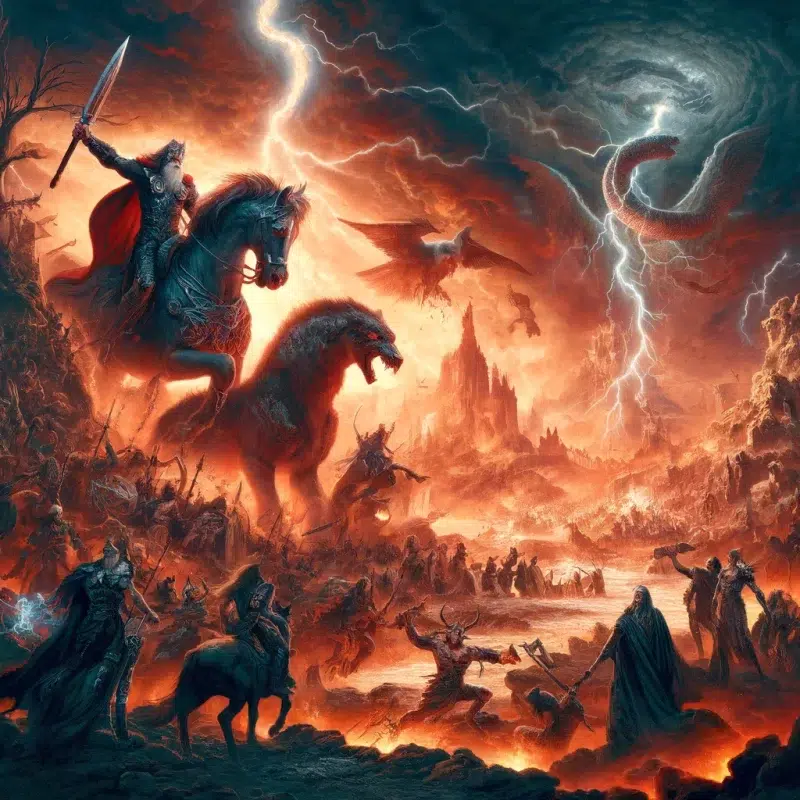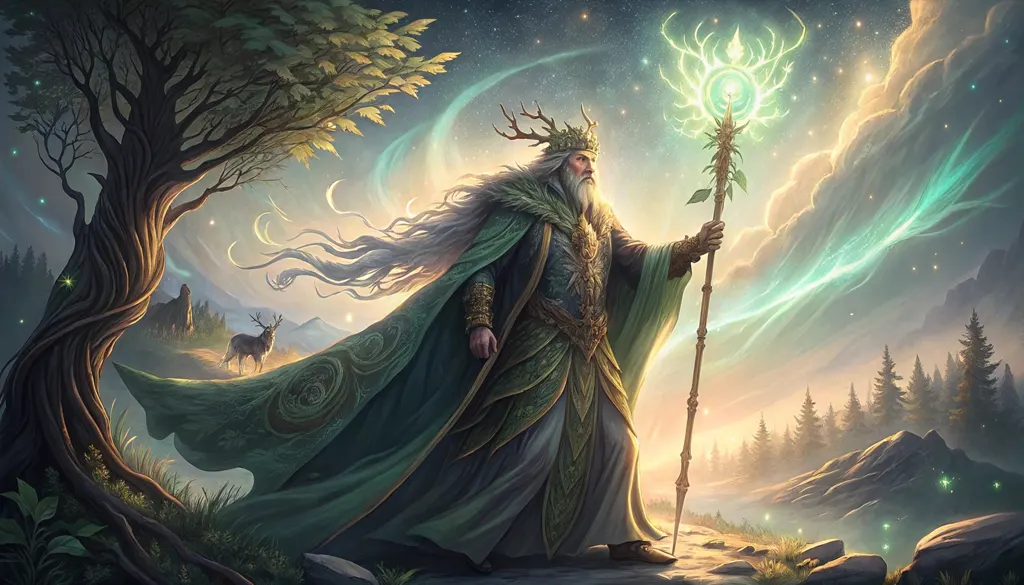Nordic Discovery
Ragnarok: The Epic End of the Norse Gods and the Rebirth of the World
Have you ever wondered what happens when the mighty Norse gods face their own apocalypse? Ragnarok is not just an end it’s a spectacular clash of cosmic forces, where fire meets ice, gods fall, and the world is reborn. Unlike many apocalyptic myths, Ragnarok ends not in total doom, but with renewal.
Let’s explore the gripping tale of Ragnarok, its ominous signs, the key players like Loki and Fenrir, the thrilling final battle, and what makes this Norse apocalypse unique.
Loki’s Role in Ragnarok
Norse mythology divides the gods into Aesir and Vanir, while the giants (Jotnar) dwell in Jotunheimr. Among them, Loki — the shapeshifting trickster, born of giants but living among the Aesir plays a pivotal role.
Loki fathers crucial figures of the apocalypse:
- Fenrir, the monstrous wolf
- Jörmungandr, the world serpent
- Hel, goddess of the underworld
Loki’s motives are driven by resentment toward the Aesir, jealousy, and cunning. His ultimate betrayal orchestrating the death of Baldr, Odin’s beloved son, a god of light and joy — deeply shakes the balance of the divine world. As punishment, Loki is bound to a rock, tormented by a serpent’s venom, until his fateful escape at the end of days.
Signs of the Apocalypse
Ragnarok is heralded by chilling signs, giving gods and mortals alike reason to fear:
- Fimbulvetr a relentless three-year winter without summer, freezing the earth and sowing despair.
- The crowing of three roosters:
- Fjalar warns the giants.
- A second rooster wakes the dead.
- Gullinkambi alerts the gods in Valhalla.
- Heimdallr, the vigilant watchman, blows his horn, awakening the gods and the dead for battle.
- Jörmungandr rises from the sea, releasing floods and poisoning the land.
These signs ripple through all realms, shaking Yggdrasill, the World Tree, to its roots.
The Final Battle at Vigrid
On the vast plain of Vigrid, chaos reigns:
- Odin, armed with his spear Gungnir, faces Fenrir but is devoured.
- Thor, wielding the mighty Mjölnir, kills Jörmungandr but takes only nine steps before succumbing to its venom.
- Frey, deprived of his magical sword, fights Surtr with an antler and falls in battle.
- Tyr and Garm, the hound of Hel, slay each other.
- Loki and Heimdallr, ancient rivals, meet in a fateful duel and die by each other’s hands.
Surtr raises his blazing sword, setting the world aflame, reducing the cosmos to ash before it sinks into the sea.
Rebirth of the World
Yet from destruction, life emerges anew:
- Lif and Lifthrasir, two mortals, survive by sheltering in Hodmimir’s Forest, destined to repopulate the world.
- Surviving gods — Baldr and Hodr return from Hel, Vidar and Vali avenge their father Odin, and Magni and Modi inherit Thor’s hammer.
At Idavoll, the surviving gods rebuild Asgard, bringing forth a new golden age of peace and prosperity. The sun is reborn, as Sol’s daughter takes her mother’s place, and the earth flourishes once more.
The Meaning of Ragnarok
Ragnarok is more than an apocalyptic myth — it’s a powerful reflection on the cycles of death and rebirth, decay and renewal. The Norse accepted that even gods were not eternal, yet through loss comes regeneration. This worldview emphasized resilience and the acceptance of inevitable change.
Ragnarok and Other Apocalyptic Myths
Ragnarok echoes across cultures:
- Judgment Day in Christianity, where souls are weighed.
- Acharit Hayamim in Judaism, heralding the Messianic era.
- The Fifth Sun in Aztec belief, foretelling destruction by earthquakes.
- Kali Yuga in Hinduism, the dark age preceding renewal.
Yet, unlike moralistic or punitive endings, Ragnarok focuses on balance — destruction clears the path for rebirth, highlighting nature’s endless cycle.
Ragnarok weaves chaos, sacrifice, and hope into one gripping saga. Even in destruction, the Norse myths remind us — life finds a way. The tale invites us to reflect on endings as part of a larger journey, where resilience and renewal prevail.
Want to bring the spirit of Ragnarok to your home? Explore our exclusive Viking decor collection and keep the legend alive!



